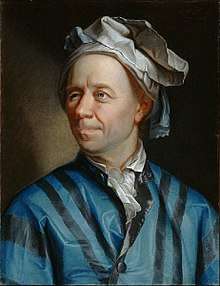2,147,483,647
The number 2,147,483,647 is the eighth Mersenne prime, equal to 231 − 1. It is one of only four known double Mersenne primes.[1]
| 2147483647 | |
|---|---|
| Cardinal | two billion, one hundred and forty-seven million, four hundred and eighty-three thousand, six hundred and forty-seven |
| Ordinal | 2147483647th (two billion one hundred forty-seven million four hundred eighty-three thousand six hundred forty-seventh) |
| Factorization | 2147483647 |
| Prime | Yes |
| Greek numeral | ͵γχμζ´ |
| Roman numeral | N/A |
| Binary | 11111111111111111111111111111112 |
| Ternary | 121121222121102021013 |
| Quaternary | 13333333333333334 |
| Quinary | 133442234340425 |
| Senary | 5530320055316 |
| Octal | 177777777778 |
| Duodecimal | 4BB2308A712 |
| Hexadecimal | 7FFFFFFF16 |
| Vigesimal | 1DB1F92720 |
| Base 36 | ZIK0ZJ36 |

The primality of this number was proven by Leonhard Euler, who reported the proof in a letter to Daniel Bernoulli written in 1772.[2] Euler used trial division, improving on Pietro Cataldi's method, so that at most 372 divisions were needed.[3] It thus improved upon the previous record-holding prime, 6,700,417, also discovered by Euler, forty years earlier. The number 2,147,483,647 remained the largest known prime until 1867.[4]
Barlow's prediction
At the time of its discovery, 2,147,483,647 was the largest known prime number. In 1811, Peter Barlow, not anticipating future interest in perfect numbers, wrote (in An Elementary Investigation of the Theory of Numbers):
Euler ascertained that 231 − 1 = 2147483647 is a prime number; and this is the greatest at present known to be such, and, consequently, the last of the above perfect numbers [i.e., 230(231 − 1)], which depends upon this, is the greatest perfect number known at present, and probably the greatest that ever will be discovered; for as they are merely curious, without being useful, it is not likely that any person will attempt to find one beyond it.[5]
He repeated this prediction in his 1814 work A New Mathematical and Philosophical Dictionary.[6][7]
In fact a larger prime was discovered in 1855 by Thomas Clausen (67,280,421,310,721), though a proof was not provided. Furthermore, 3,203,431,780,337 was proven to be prime in 1867.[4]
In computing
The number 2,147,483,647 (or hexadecimal 7FFFFFFF16) is the maximum positive value for a 32-bit signed binary integer in computing. It is therefore the maximum value for variables declared as integers (e.g., as int) in many programming languages, and the maximum possible score, money, etc. for many video games. The appearance of the number often reflects an error, overflow condition, or missing value.[8] In December 2014, Google said that PSY's music video "Gangnam Style" had exceeded the 32-bit integer limit for YouTube view count, necessitating YouTube to upgrade the counter to a 64-bit integer.[9][10]
The data type time_t, used on operating systems such as Unix, is a signed integer counting the number of seconds since the start of the Unix epoch (midnight UTC of 1 January 1970), and is often implemented as a 32-bit integer.[11] The latest time that can be represented in this form is 03:14:07 UTC on Tuesday, 19 January 2038 (corresponding to 2,147,483,647 seconds since the start of the epoch). This means that systems using a 32-bit time_t type are susceptible to the Year 2038 problem.[12]
See also
References
- Weisstein, Eric W. "Double Mersenne Number". MathWorld. Wolfram Research. Retrieved 29 January 2018.
- Dunham, William (1999). Euler: The Master of Us All. Washington, DC: Mathematical Association of America. p. 4. ISBN 978-0-88385-328-3.
- Gautschi, Walter (1994). Mathematics of Computation, 1943–1993: A Half-Century of Computational Mathematics. Proceedings of Symposia in Applied Mathematics. 48. Providence, Rhode Island: American Mathematical Society. p. 486. ISBN 978-0-8218-0291-5.
- Caldwell, Chris (8 December 2009). "The Largest Known Prime by Year: A Brief History". The Prime Pages. University of Tennessee at Martin. Retrieved 29 January 2018.
- Barlow, Peter (1811). An Elementary Investigation of the Theory of Numbers. London: J. Johnson & Co. p. 43.
greatest.
- Barlow, Peter (1814). A New Mathematical and Philosophical Dictionary: Comprising an Explanation of Terms and Principles of Pure and Mixed Mathematics, and Such Branches of Natural Philosophy as Are Susceptible of Mathematical Investigation. London: G. and S. Robinson.
- Shanks, Daniel (2001). Solved and Unsolved Problems in Number Theory (4th ed.). Providence, Rhode Island: American Mathematical Society. p. 495. ISBN 978-0-8218-2824-3.
- See, for example: . A search for images on Google will find many with metadata values of 2147483647. This image, for example, claims to have been taken with a camera aperture of 2147483647.
- "Gangnam Style YouTube Overflow".
- "'Gangnam Style' breaks YouTube". CNN.com. 3 December 2014. Retrieved 19 December 2014.
- "The Open Group Base Specifications Issue 6 IEEE Std 1003.1, 2004 Edition (definition of epoch)". IEEE and The Open Group. The Open Group. 2004. Archived from the original on 19 December 2008. Retrieved 7 March 2008.
- "The Year-2038 Bug". Archived from the original on 18 March 2009. Retrieved 9 April 2009.